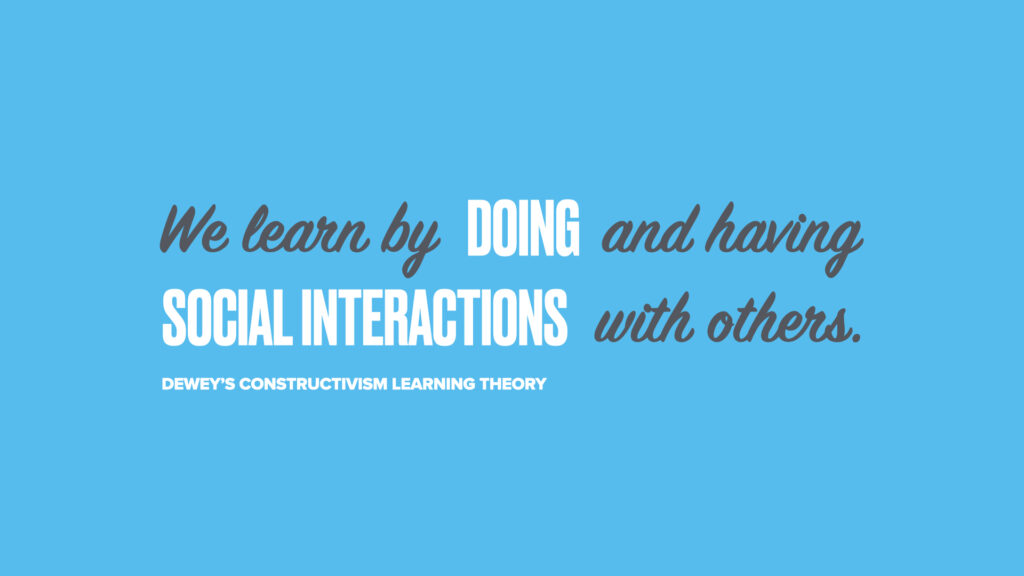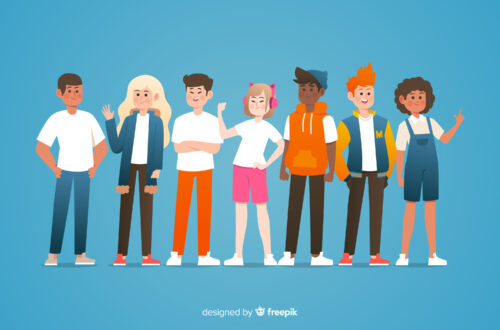Service-Learning IGNITE Talk
Combatting Apathy With Empathy: A Focus on Technology and Service-Learning
Two years ago I sat down with the fourth-grade teachers at our school to co-write a persuasive writing unit for ELA. We wanted to use project-based learning (PBL) to give our students an authentic challenge or task to motivate them and at the same time refining their skills in persuasive writing. We also were interested in trying out service-learning, a form of experiential learning, where students partner with community groups to make a difference. We met weekly to design the curriculum and after several months of work, we emerged with our Community Helpers Unit.
We have taught the unit for several years now, continuing to edit and revise, improve our resources and instructional materials, and strengthen our connections with community organizations. We have watched students take their knowledge of persuasive writing and enthusiastically advocate for a need in their own backyard. We have witnessed people’s lives in our community be changed and awareness raised. While we followed a PBL format that encouraged students to seek input and revise their projects, the real game-changer was service-learning. Our ultimate goal was to teach our students about empathy and that’s where service-learning came in.
Service-learning is a teaching pedagogy that intentionally connects classroom learning with service opportunities outside of the school. Some of the key characteristics are:
- Service or “work” must directly connect to curriculum
- Partnership with community organizations addressing community needs
- Regular reflection time
- Duration: Projects need to to be more than a one time deal
- Projects give students practice with collaboration, communication, critical thinking, and creativity
Research shows that service-learning produces great results too. Student scores improve, they are more engaged, and students demonstrate an increased civic responsibility and desire to serve others. But more importantly, students learn about empathy and how to show compassion to other people. This was our number one goal for the unit. Yes, we wanted students to master the ELA persuasive writing standards, expand their digital literacy skills, and leverage technology to create meaningful presentations BUT we also wanted them to learn about the positive impact one person can have and the significance of empathy.
After seeing the difference this unit makes not only in the lives of our students, but also for our local community, I decided it was too good not to share. So I decided to submit a conference proposal. I chose to do an IGNITE talk for The Northwest Council for Computer Education (NCCE). IGNITE talks are a “10-minute fast-paced presentation that aims to “ignite” the passion, curiosity, and interest in the audience” (NCCE). The presentation must be exactly 20 slides and automatically change after 30 seconds. The presentation will cover the following points:
- The problem: apathetic students
- The solution: Service-Learning
- Past Research on Service-Learning
- The biggest impact: teaching our students about empathy
- Information about our school’s 4th grade Community Fair. Details on how we leveraged different types of technology for powerful student presentations and the impact it had
- Why empathy matters
The presentation is aimed to cover ISTE Coaching Standard 3:
Coaches establish productive relationships with educators in order to improve instructional practice and learning outcomes. Coaches:
- Establish trusting and respectful coaching relationships that encourage educators to explore new instructional strategies.
- Partner with educators to identify digital learning content that is culturally relevant, developmentally appropriate and aligned to content standards.
Through my presentation, I aim to “encourage educators to explore new instructional strategies” by explaining what service-learning is. I share a definition, key characteristics, common misconceptions, and a personal experience of using service-learning during ELA instruction. Substandard b states: “identify digital learning content that is culturally relevant, developmentally appropriate and aligned to content standards”. During my presentation, I explain various technology tools and platforms that are kid-friendly that students can use to gather information, collaborate, and create a persuasive presentation. My ELA unit, Community Helpers, was with fourth graders. However, it can be adapted to fit any area based on location and community background. In general, service-learning can be used in any subject and connected to any standard. The universal goal for everyone participating is that students become aware, empathetic, and active citizens in their communities. I hope teachers, coaches and administrators leave my IGNITE talk feeling curious and excited to dive into service-learning with their students.
In case you are interested in learning more about the technology we used with our students, here is a list:
- Green Screen videos made with DoInk
- Student podcasts via Anchor
- Website Design and Digital Posters with Adobe Spark
- Video creation with Powtoon and Animaker
- Infographics with the help of Visme
- Digital comic strips with Storyboard That
- Augmented Reality Art, made possible with Roar
- Digital Informational books with Book Creator
- Research: Next year I would like students to curate and share resources with the help of Wakelet
- Collaboration: we used email, Skype for Business, FaceTime, and Microsoft Teams to connect with outside experts
I hope to provide educators with an opportunity to discuss service-learning more after the presentation by hosting a TwitterChat. You can also check out #servicelearning on Twitter.
While the teaching day is short and it is always hard to “fit one more thing in”, you will not regret trying out service-learning. It does not take the place of your direct instruction, but gives you a framework to work with that allows students to experience their learning first hand in their own communities.

Resources
Community Engagement UCO. (2017, September 14). Service Learning Definition [Video]. YouTube. https://www.youtube.com/watch?time_continue=86&v=L9AXsV3eulI&feature=emb_logo




One Comment
Brand Animators
Informative blog article! I look forward to your future updates.
Explainer Video San Francisco, California, 3d 2d Animation Video makers Houston, Healthcare Video Production Company in Texas